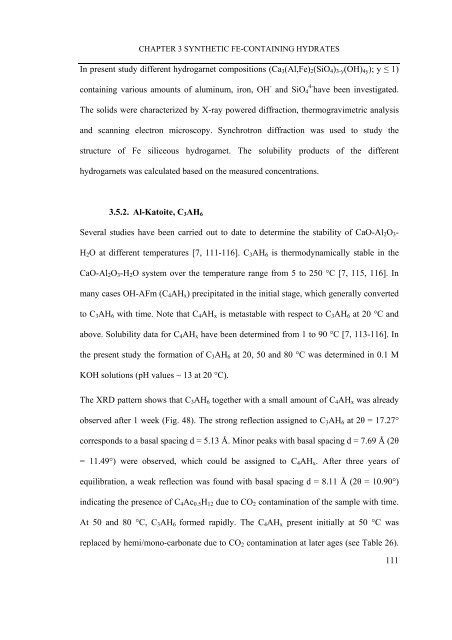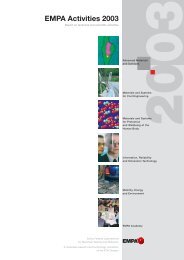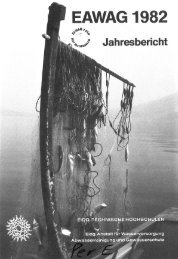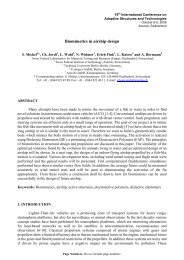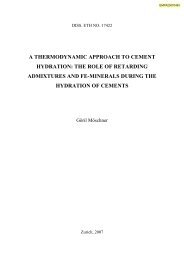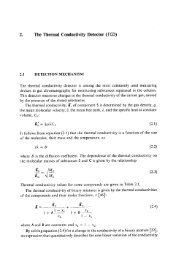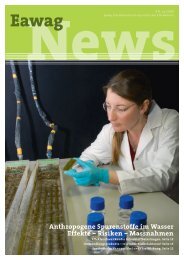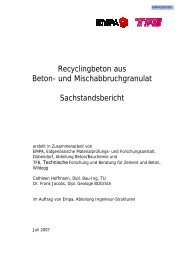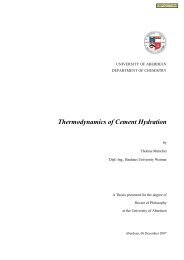Belay Zeleke Dilnesa - Eawag-Empa Library
Belay Zeleke Dilnesa - Eawag-Empa Library
Belay Zeleke Dilnesa - Eawag-Empa Library
Create successful ePaper yourself
Turn your PDF publications into a flip-book with our unique Google optimized e-Paper software.
CHAPTER 3 SYNTHETIC FE-CONTAINING HYDRATES<br />
In present study different hydrogarnet compositions (Ca3(Al,Fe)2(SiO4)3-y(OH)4y); y ≤ 1)<br />
containing various amounts of aluminum, iron, OH - and SiO4 4- have been investigated.<br />
The solids were characterized by X-ray powered diffraction, thermogravimetric analysis<br />
and scanning electron microscopy. Synchrotron diffraction was used to study the<br />
structure of Fe siliceous hydrogarnet. The solubility products of the different<br />
hydrogarnets was calculated based on the measured concentrations.<br />
3.5.2. Al-Katoite, C3AH6<br />
Several studies have been carried out to date to determine the stability of CaO-Al2O3-<br />
H2O at different temperatures [7, 111-116]. C3AH6 is thermodynamically stable in the<br />
CaO-Al2O3-H2O system over the temperature range from 5 to 250 °C [7, 115, 116]. In<br />
many cases OH-AFm (C4AHx) precipitated in the initial stage, which generally converted<br />
to C3AH6 with time. Note that C4AHx is metastable with respect to C3AH6 at 20 °C and<br />
above. Solubility data for C4AHx have been determined from 1 to 90 °C [7, 113-116]. In<br />
the present study the formation of C3AH6 at 20, 50 and 80 °C was determined in 0.1 M<br />
KOH solutions (pH values ~ 13 at 20 °C).<br />
The XRD pattern shows that C3AH6 together with a small amount of C4AHx was already<br />
observed after 1 week (Fig. 48). The strong reflection assigned to C3AH6 at 2θ = 17.27°<br />
corresponds to a basal spacing d = 5.13 Å. Minor peaks with basal spacing d = 7.69 Å (2θ<br />
= 11.49°) were observed, which could be assigned to C4AHx. After three years of<br />
equilibration, a weak reflection was found with basal spacing d = 8.11 Å (2θ = 10.90°)<br />
indicating the presence of C4Ac0.5H12 due to CO2 contamination of the sample with time.<br />
At 50 and 80 °C, C3AH6 formed rapidly. The C4AHx present initially at 50 °C was<br />
replaced by hemi/mono-carbonate due to CO2 contamination at later ages (see Table 26).<br />
111


